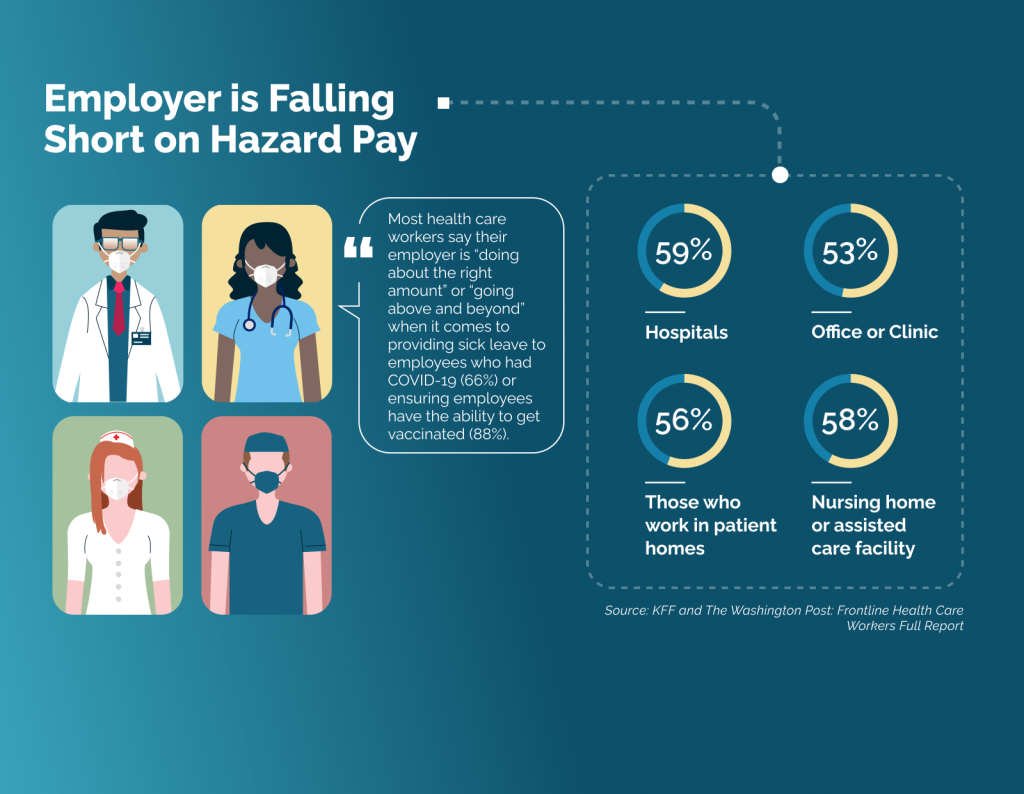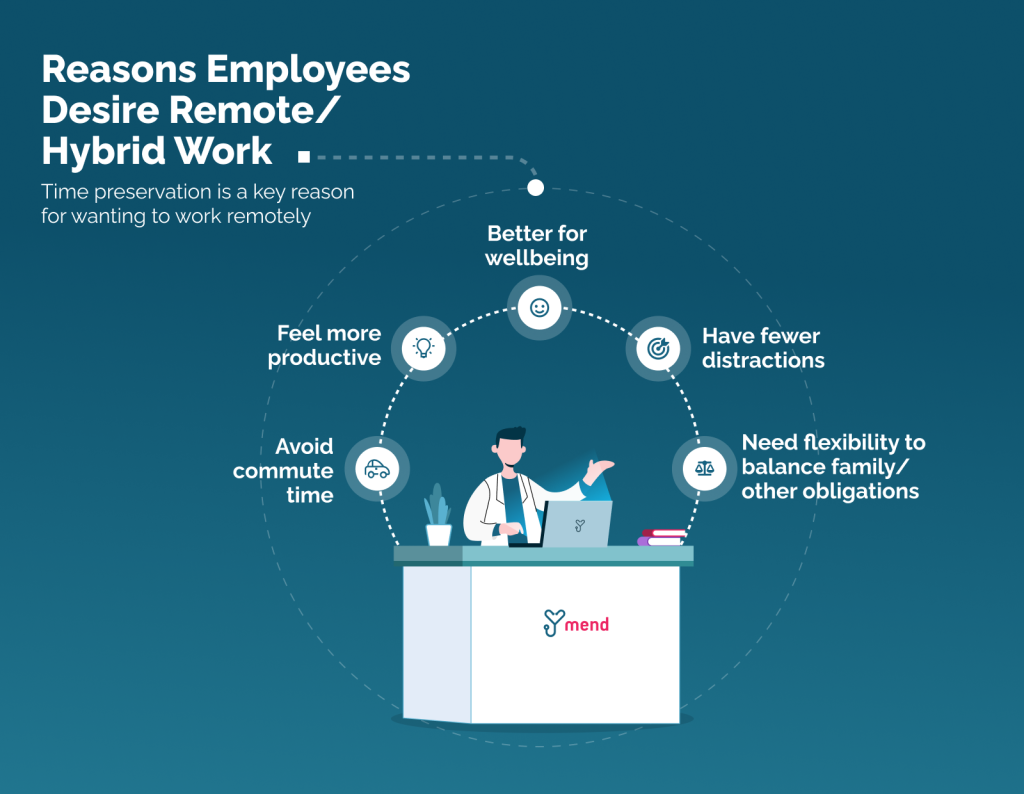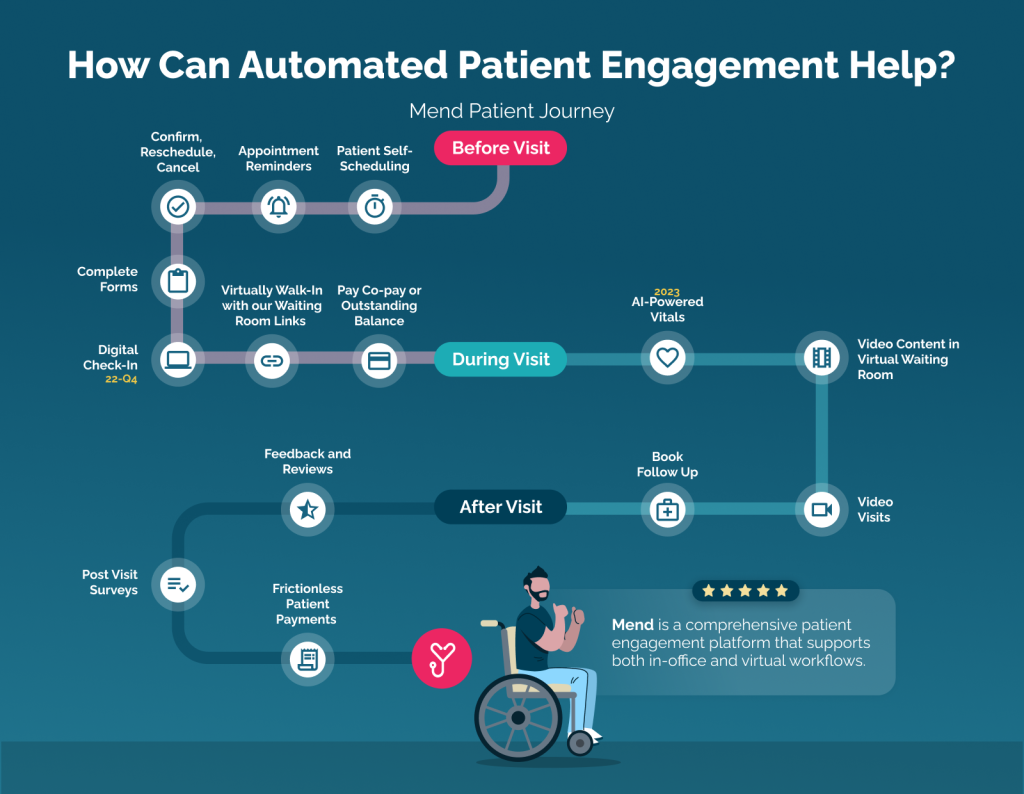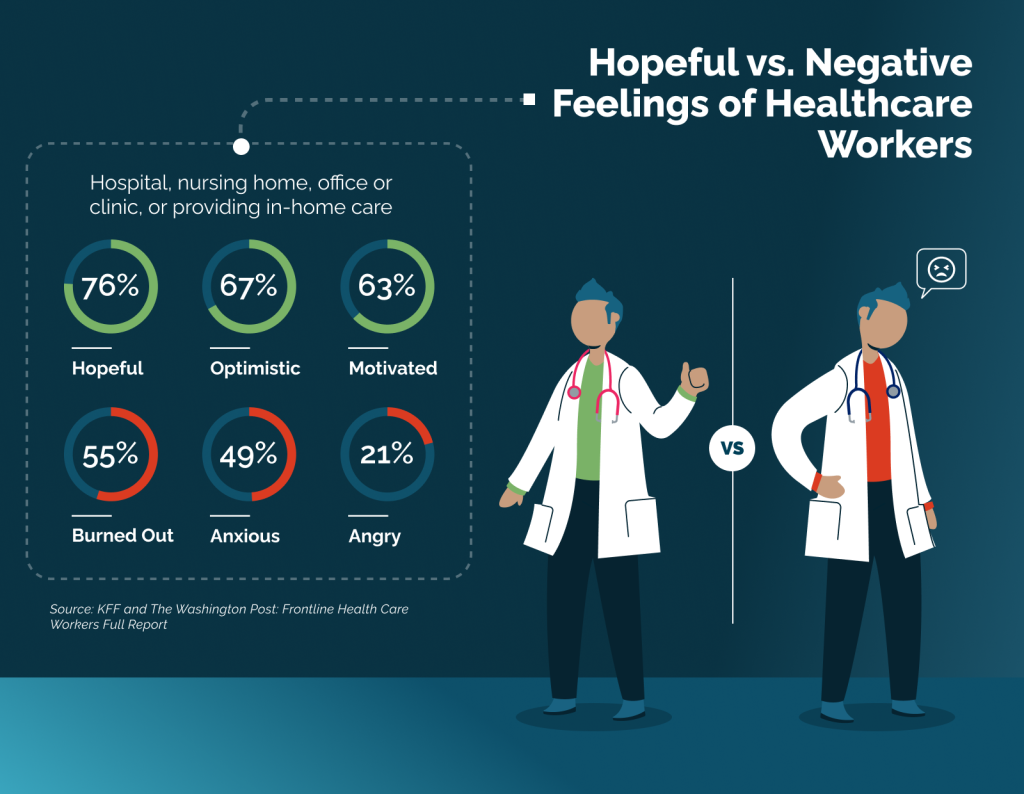The Great Resignation in Healthcare & What To Do About It

Healthcare workers were affected by the Great Resignation in a unique way due to the unprecedented stress and challenges related to COVID-19. Read here about what you can do about it.
The Great Resignation in healthcare has already taken a significant toll on the industry, with more workers eyeing the door due to burnout and short-staffing. This article will explore the current landscape relating to the loss of healthcare workers, plus the steps your organization can take to reduce burnout and increase retention.
Jump ahead:
- Defining Healthcare’s Great Resignation
- Burnout According to the AMA
- Feelings of Healthcare Workers
- Employer is Falling Short on Hazard Pay
- A Provider’s Perspective
- How to Make Employees Feel Valued
- How Automating Your Patient Engagement Can Help
- Conclusion
Defining Healthcare’s Great Resignation
While the Great Resignation has gripped many industries, the healthcare sector has been particularly hard hit.

The American Hospital Association (AHA) reported that healthcare lost an estimated 20% of its workforce in the last year alone. This includes 30% of its nurses. This translates to roughly 5 million U.S. workers quitting their jobs. In many cases, the workers have left their career fields entirely.
Many factors contribute to healthcare workers leaving in droves. These include increasing paperwork, loss of personal accomplishment, and lack of work-life balance. In short, workers are facing burnout.
Burnout According to the AMA
It’s no secret that burnout is having significant implications on the workforce. A new study by the American Medical Association (AMA) shows that one in 5 physicians and 2 in 5 nurses intend to leave their current practice within two years. The same study shows that approximately 1 in 3 physicians, APPs, and nurses intend to reduce their work hours.

This burnout comes at a steep cost. According to the AMA, the cumulative cost of turnover and reduced clinical hours due to physician burnout in the U.S. is estimated at $4.6 billion annually.
Researchers found that specific factors are contributing to whether healthcare workers quit or reduce their hours. These factors include higher levels of burnout, workload, fear of infection, and anxiety and depression due to COVID-19. The number of years in practice is also a significant factor.
Feelings of Healthcare Workers
A recent survey by KFF/Washington Post shows that 76% of frontline healthcare workers say they feel “hopeful” when going to work these days. Majorities also say they feel “optimistic” (67%) and motivated (63%).
Yet, about half also say they feel “ burned out” or “anxious.” About one in five say they feel “angry” when they go to work these days.
Age is also an important factor to consider. The survey shows that younger healthcare workers are more likely to report negative feelings than their older counterparts. Three in ten frontline healthcare workers ages 18-29 report feeling “angry” about going in to work these days.
These results may be directly linked to their COVID-19 work experiences.
For instance, four in ten 18-29-year-old adults (41%) report working in a hospital setting. These workers saw the most severe COVID-19 cases. This age group also reports having to work harder or more hours than their older counterparts.
Employer is Falling Short on Hazard Pay
In addition to burnout, many employees don’t feel support from their employers.
Organizations should provide additional pay for employees working in the most high-risk situations. Yet more than half of healthcare workers say their employer is “falling short” when providing additional pay.
This response was consistent whether an employee was working in a hospital, nursing home, clinic, or in-home care. This is a key opportunity that every healthcare leader can seize to improve employee retention.

A Provider’s Perspective
A recent report on healthcare workplace shortages by the Minnesota Department of Public Health offers a physician’s perspective. The report reveals that one out of every three rural physicians plans on leaving their profession within the next five years.
The most common reasons cited for leaving their professions early include the following:
- Red tape from health insurers
- Stress from the COVID-19 pandemic
- Consolidations of medical practices
- Emotional exhaustion
- Depersonalization
- Loss of personal accomplishment
This loss of physicians will have a tremendous impact on patients in rural areas. It will make it harder for patients to get appointments and receive care in a timely manner. Patients will also have to commute longer distances.
It will also come at a significant financial cost to organizations. For instance, the cost of replacing just one physician could reach $250,000 and may even exceed $1 million.
How to Make Employees Feel Valued
It’s no surprise that frontline workers who feel valued are less likely to leave their place of employment. In order to address employee retention and satisfaction in the healthcare setting, here are some methods to consider:
- Offer good compensation packages
- Additional hazard pay or sick leave for high-risk settings
- Prioritize a healthy work-life balance
- Provide meaningful work
- Remove barriers that create extra work
- Have performance pay or bonuses
- Celebrate achievements
- Offer professional development and learning opportunities
- Ask, acknowledge and act on feedback
- Hire internally

While improving employee retention will take a multi-faceted approach, one solution may relieve many staff burdens and complaints: automation.
How Automating Your Patient Engagement Can Help

The COVID-19 pandemic saw a massive shift to remote work and the adoption of telehealth and virtual visits. Nearly three years later, the desire for remote work persists. Many employees cite a better work-life balance, fewer distractions, and increased flexibility as a result of remote work.
We can continue to use telehealth to automate processes, provide flexibility to workers, and ultimately increase worker satisfaction and retention. Here’s how we do it at Mend:
Automate Patient Payment
Mend integrates with your organization’s medical billing software in order to automate patient payments. This can occur before or after an in-person or virtual encounter. It’s an easy way to give time back to your employees and allows them to focus on providing care.
Telehealth Helps Solve Burnout & Staffing Issues
With telehealth visits, providers will need less support staff to conduct the visits. Telehealth visits can be more productive, which in turn gives time back to providers. Virtual visits can be faster, and multi-screen workflows allow providers to document during the visit.
Telehealth also helps to reduce burnout by allowing providers to be remote or hybrid. Practices can also utilize telehealth to recruit providers from anywhere. This can help fill staffing shortages and relieve demands on current staff.
Allow Patients to Self-Schedule
The traditional way of scheduling an appointment takes up time that could be better spent elsewhere. A staff member shouldn’t have to manually input patient appointments when there are faster ways.
A sophisticated telehealth platform can simplify this process. With Mend, patients can self-schedule and modify their appointments online. This takes the work of your front desk staff while also reducing no-shows.
Automate Patient Forms
Paperwork can be a labor-intensive and repetitive process in the healthcare setting. Automating these tasks can immediately help to reduce staff burden and increase employee satisfaction rates.
With Mend, patients receive a digital intake form prior to their in-person or virtual visit. The patient clicks the link and completes forms at their own convenience in advance of the visit. The integration automatically moves forms and data into the chart.
Automate Reminders and Appointment Changes
The success of any practice depends on patients showing up for their appointments. This is why communicating early and often with patients is important.
Manual phone calls, however, waste time and take your staff away from other tasks. Automated appointment reminders via text, email, and voice work to reduce staff manual labor.
Conclusion
It’s uncertain if we’ve yet seen the full effects of the Great Resignation among healthcare workers. The good news is, there are key solutions that your organization can put in place right now to support frontline workers. This will result in a healthier work environment that reduces burnout. All you need to do is contact a specialist at Mend who can help automate your workflows today.
